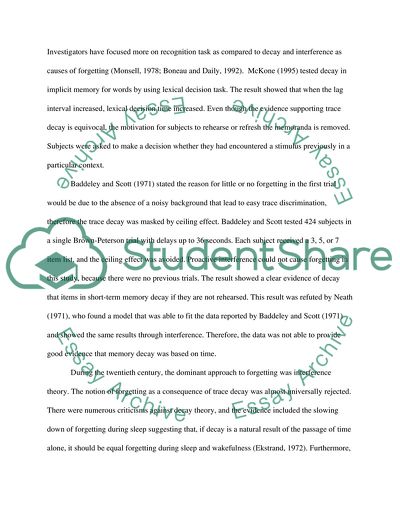Cite this document
(“The Idea of Trace Decay Research Paper Example | Topics and Well Written Essays - 5000 words”, n.d.)
The Idea of Trace Decay Research Paper Example | Topics and Well Written Essays - 5000 words. Retrieved from https://studentshare.org/psychology/1738832-in-search-of-decay-in-forgetting-memory-for-pictures
The Idea of Trace Decay Research Paper Example | Topics and Well Written Essays - 5000 words. Retrieved from https://studentshare.org/psychology/1738832-in-search-of-decay-in-forgetting-memory-for-pictures
(The Idea of Trace Decay Research Paper Example | Topics and Well Written Essays - 5000 Words)
The Idea of Trace Decay Research Paper Example | Topics and Well Written Essays - 5000 Words. https://studentshare.org/psychology/1738832-in-search-of-decay-in-forgetting-memory-for-pictures.
The Idea of Trace Decay Research Paper Example | Topics and Well Written Essays - 5000 Words. https://studentshare.org/psychology/1738832-in-search-of-decay-in-forgetting-memory-for-pictures.
“The Idea of Trace Decay Research Paper Example | Topics and Well Written Essays - 5000 Words”, n.d. https://studentshare.org/psychology/1738832-in-search-of-decay-in-forgetting-memory-for-pictures.


